 Korean idol groups going to China for promotions has become a common sight. Like most, JYP‘s newest girl group, Twice, has also started setting their sights for promoting in China, with performances in the Beijing Spring Festival Gala and Anhui Spring Festival Gala lined up.
Korean idol groups going to China for promotions has become a common sight. Like most, JYP‘s newest girl group, Twice, has also started setting their sights for promoting in China, with performances in the Beijing Spring Festival Gala and Anhui Spring Festival Gala lined up.
In line with this, Jackson and Tzuyu appeared on the Korean television show A Look at Myself, where they were asked about their nationalities. In response, Jackson replied that he was from Hong Kong. He then answered for Tzuyu, saying she is from Taipei. To this, the captions flashed was “Taipei = Taiwan,” with the Taiwanese flag beside it.
This incident has been blown up due to the political tensions between China and Taiwan, an issue that has long been unresolved between the two governments. In the days since, Taiwanese singer Huang An, who is not a supporter of the Taiwanese independence movement, has voiced that Tzuyu is a supporter of Taiwanese independence. This is supposedly due to her always saying that she is from Taiwan and not acknowledging when MC’s elaborate further with “China-Taiwan.”
There are numerous instances of Taiwanese artists successfully promoting in mainland China, such as Jolin Tsai and Jay Chou. The issue arises when the artist shows support for Taiwanese independence, or if even support is hinted at. Taiwanese independence supporters, either in reality or even hinted at, are not allowed to perform in most Chinese broadcasts, with Hunan TV already saying that they will not allow any Taiwanese independence supporters to be broadcast.
Like previous instances of Taiwanese stars seemingly supporting the Taiwanese independence movement, or even preferring anything Taiwanese, there has been backlash. In response to the controversy, Twice’s recorded performance for the Beijing Spring Festival Gala will be edited out and their invitation to the Anhui Spring Festival Gala has been rescinded. Twice’s CF deal with LG and Huawei has also seemingly been terminated.
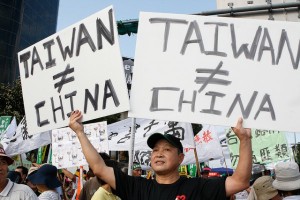 For the uninitiated, this may be surprising, and confusing. The tensions between the Chinese and Taiwanese is pervasive in their societies, but it is usually the view of their own country that is taught. It’s a sure thing that this issue will not die down anytime soon in China, and as it is an issue rarely given notice to the general public, it’s essential to understand the history of the two countries to understand the conflict.
For the uninitiated, this may be surprising, and confusing. The tensions between the Chinese and Taiwanese is pervasive in their societies, but it is usually the view of their own country that is taught. It’s a sure thing that this issue will not die down anytime soon in China, and as it is an issue rarely given notice to the general public, it’s essential to understand the history of the two countries to understand the conflict.
What’s in a Name: An Explanation of Official Names
China is officially the People’s Republic of China (PRC) and is a one-party state, ruled by the Communist Party. Their jurisdiction area is also referred to as mainland China, with two self-governing administrative regions (Hong Kong and Macau), with an additional claim over Taiwan. They are represented in most international bodies, and occupy the official Chinese seat in the United Nations.
Taiwan is officially the Republic of China (ROC) and has a multi-party, democratic political system. The seat of government is in the island of Taiwan, which also accounts for most of what constitutes the Republic of China. Taiwan is also known as Chinese Taipei, the name agreed upon in the Nagoya Resolution by the PRC and the ROC. It is the name used in most international competitions such as the Olympics, the FIFA World Cup, and in the World Health Organization (WHO).
Most might think that the issue starts when Taiwan declared its independence; but there is no such formal, unilateral declaration. This is because the Chinese have vowed to use force if the Taiwanese ever declare their independence. Taiwanese independence supporters also maintain that the Taiwanese have been independent all this time, and to declare independence would be redundant.
Instead, one must look further into their history to understand the tensions.
A Short Taiwanese and Chinese History Lesson
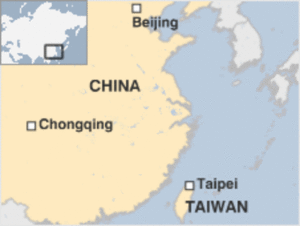 Prior to being known as Taiwan, it was known as Formosa since the 1500s by Portuguese sailors and in European texts. It then became known as Taiwan when the Dutch East India Company established a trading post, Fort Zeelandia, in an area they called Tayouan, in modern day Tainan.
Prior to being known as Taiwan, it was known as Formosa since the 1500s by Portuguese sailors and in European texts. It then became known as Taiwan when the Dutch East India Company established a trading post, Fort Zeelandia, in an area they called Tayouan, in modern day Tainan.
The fort was later captured by Chinese Ming dynasty loyalists, who in turn ruled from 1662 to 1682 before an admiral of the new dynasty in mainland China, the Qing Dynasty, defeated them in battle and annexed Taiwan into the jurisdiction of the Qing imperial government. Later on, in 1887, the Qing changed the classification of Taiwan from being under jurisdiction of Fujian province, to that of Fujian-Taiwan Province.
Following the Qing Dynasty defeat during the First Sino-Japanese War, Taiwan was ceded to Japan ‘in perpetuity’ and ‘full sovereignty’ as part of the Treaty of Shimonoseki, which also saw the Qing recognizing the independence and sovereignty of Korea. The Japanese continued their occupation of Taiwan until the end of World War II, that saw the Japanese in defeat.
After the First Sino-Japanese war, there was an increase in discontent in China. The Imperial Government tried to resolve the issues following their defeat in the Sino-Japanese War, and the other wars that followed, but they would fail. Many revolutionary groups were formed, but the biggest and most successful was led by Sun Yat-Sen, an anti-monarchist who believed in national unification.
In January 1912, the Republic of China was established with Sun Yat-Sen as the first Provisional President. A month later, the last Qing Emperor, Emperor Puyi and his mother, the Empress Dowager, both signed abdication papers, effectively ending the Qing Dynasty with the Republic of China as the successor. In the same year, Yuan Shikai was declared the second Provisional President and the political party Koumintang (KMT) was founded by one of Sun Yat-Sen’s associates.
Shortly after the death of Yuan in 1916, warlords seized control of northern parts of China. In 1919, Sun Yat-Sen re-established the Koumintang as a rival government to that in Beijing. He sought to reunify China by defeating the warlords in the north, but failed. He then sought help from Western powers, but receiving none, turned to the Soviet Union. Under the advice of Soviet advisors, Sun Yat-Sen allowed the Communist Party of China (CPC) into Koumintang in 1923, forming the First United Front to combat the warlords.
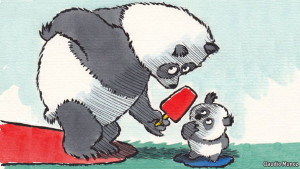 In 1925, Sun Yat-Sen died and Chiang Kai-Shek took over the Koumintang and led the Northern Expedition. Under Chiang Kai-Shek, the Northern Expedition succeeded in defeating the remaining warlords, led to the establishment of the Nanjing Government, and reunified China.
In 1925, Sun Yat-Sen died and Chiang Kai-Shek took over the Koumintang and led the Northern Expedition. Under Chiang Kai-Shek, the Northern Expedition succeeded in defeating the remaining warlords, led to the establishment of the Nanjing Government, and reunified China.
The Chinese Civil War
In 1926, after an assassination attempt blamed on the Communists, Chiang Kai-Shek grew weary of the CPC. This led to tensions between the two factions. Chiang would later impose restrictions and in April 12, 1927, hundreds of CPC members were executed by the KMT army in an incident that is known as the Shanghai Massacre. It became one of the starting points of the Chinese Civil War between the CPC and KMT.
After several months, the CPC retaliated with the Nanchang Uprising, which is the start of the CPC revolt against the KMT regime, and eventually led to the formation of the People’s Liberation Army. The KMT was able to suppress the rebellion, but by that time, the CPC had moved elsewhere. This is the pattern that followed for a decade until Chiang Kai-Shek was forced to form the Second United Front with the CPC due to the Japanese invasion.
The Second United Front lasted from 1937 to 1941, where tensions grew and resulted in a break down of the united front. During this time, the CPC had grown in popular support due to the success of their guerrilla tactics, while the KMT forces was weakened due to having to defend the country from various Japanese military campaigns.
After the end of the Second World War, the CPC and KMT resumed their clashes and battles, with the CPC pushing the KMT back until they took control of most of mainland China. In October 1949, Mao Zedong, the leader of the CPC, declared a renamed Beijing as the capital of the People’s Republic of China. In December 1949, a defeated Chiang Kai-Shek declared Taiwan as the temporary capital of the Republic of China.
It’s important to note that the Chinese Civil War is not officially over due to the lack of an agreement or treaty.
International Recognition: The One China Policy
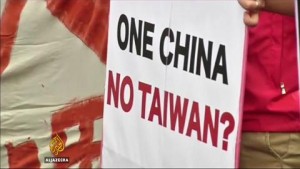 When Japan surrendered after the Second World War, they accepted the Potsdam Declaration, which was issued in 1945 by US President Harry S. Truman, UK Prime Minister Winston Churchill, and the Chairman of the Nationalist Government of China, Chiang Kai-Shek. Amongst the terms of the Potsdam Declaration was that Japan was to return all territories of China they had occupied, including Taiwan, to the Chinese.
When Japan surrendered after the Second World War, they accepted the Potsdam Declaration, which was issued in 1945 by US President Harry S. Truman, UK Prime Minister Winston Churchill, and the Chairman of the Nationalist Government of China, Chiang Kai-Shek. Amongst the terms of the Potsdam Declaration was that Japan was to return all territories of China they had occupied, including Taiwan, to the Chinese.
When the United Nations was founded in October 1945, the Republic of China was accorded the honor of being the first signatory of the UN Charter due to their part in defeating the Axis powers during the World War. This was also the reason why China became a permanent member of the Security Council.
During the 1950s and 1960s, the ROC enjoyed close ties with the United States and its allies, while the PRC was supported by the Soviet Union and its allies. From 1960, an annual resolution would be proposed in the General Assembly to expel the ROC and grant PRC the right to represent China due to their control of mainland China. For a decade, the United States and its allies were able to block the resolution, but with the increase of newer members that allied with the PRC, and the changing views of other members towards the PRC, UN General Assembly Resolution 2758 passed in October 25, 1971. This allowed the PRC to take over the Chinese seat in all United Nations bodies, including the General Assembly, and one of five Permanent Seats in the Security Council.
The ROC have routinely sent a letter asking to be accepted every year since their exclusion, but has been denied every year. In 2007, Taiwan requested a seperate seat in the General Assembly as Taiwan, not China, but was denied, with the UN stating that Taiwan is seen as part of China due to Resolution 2758 in 1971. Until now, the only United Nations body that the ROC participates in is the WHO, on the condition that it is invited every year to participate.
To become a member of the United Nations General Assembly is a huge step towards the international community recognizing one’s sovereignty. Traditionally, to be considered a sovereign state requires several aspects: a defined territory, a permanent population, jurisdiction in your territory, the ability of the government to conduct business with other states, and international recognition by other states. Once you have all these, it’s a fairly simple process to becoming a member of the United Nations.
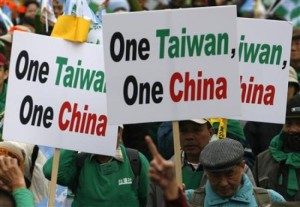 It is international recognition that routinely hinders the Taiwan to becoming a member of the United Nations, and thus becoming established as a separate entity from China. This is made harder due to China’s insistance that Taiwan is part of their jurisdiction, going to lengths to include it in their constitution.
It is international recognition that routinely hinders the Taiwan to becoming a member of the United Nations, and thus becoming established as a separate entity from China. This is made harder due to China’s insistance that Taiwan is part of their jurisdiction, going to lengths to include it in their constitution.
A major reason that makes it difficult is the One China Policy. This policy is the view that there is only one state called China, despite the existence of two governments claiming to be China. A result is that countries that have established formal diplomatic relations with the PRC cannot have diplomatic ties with Taiwan, and vice versa.
On this, the ROC maintains that they are the remnants of the legitimate government of a country now overrun by the Communist party, and that they are they have de jure (by law, by right) sovereignty over all of China. In contrast, the PRC states that by claiming and successfully ruling over mainland China, they have de facto (in reality, in fact) sovereignty.
To this day, only 22 countries recognize Taiwan as an independent country.
In short, why are the Chinese and Chinese media unofficially blacklisting Twice because of Tzuyu’s nationality? Simply put, she has been equated to as a sympathizer of the Taiwanese independence movement, and because of the heavy history between the Chinese and Taiwanese, this simply cannot be condoned by China.
This puts the poor girl in this situation, where she did not actually imply anything, except that she is from Taiwan as she was surely raised to do. She did not wave a Taiwanese flag in China, nor did she actually speak the words that she supports the Taiwanese independence movement. She had, in fact, stated that she is from Taipei, which is the diplomatic answer. Unfortunately, the producers decided to edit in the Taiwanese flag, which has resulted in the mess she, her group, and her company are currently in.
This issue is not going anywhere in the near future, and the issue of Tzuyu’s nationality will most probably hinder the advancement of Twice into the Chinese market.
What about you readers? Has this helped you understand the conflict? Any conflicting opinions? Anyone from China or Taiwan wish to share their view? Feel free to comment below!
(Chinatimes, LTN, Twitter, Council on Foreign Relations, Foreign Policy, The Economist, The Diplomat, BBC, The Wall Street Journal [1], Brittanica, The New World of International Relations, 7th Edition; Michael G. Roskin and Nicholas O. Berry; 2004, World Politics in the 21st Century; Duncan, N.; 2008, Images [1][2][3][4], JYP Entertainment)


